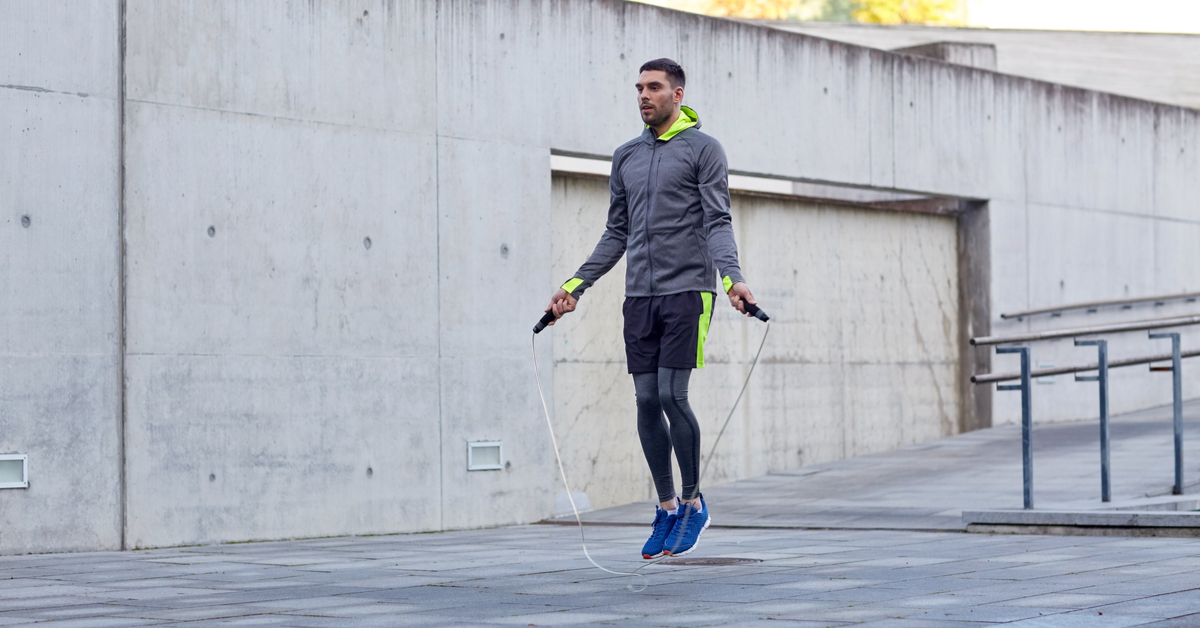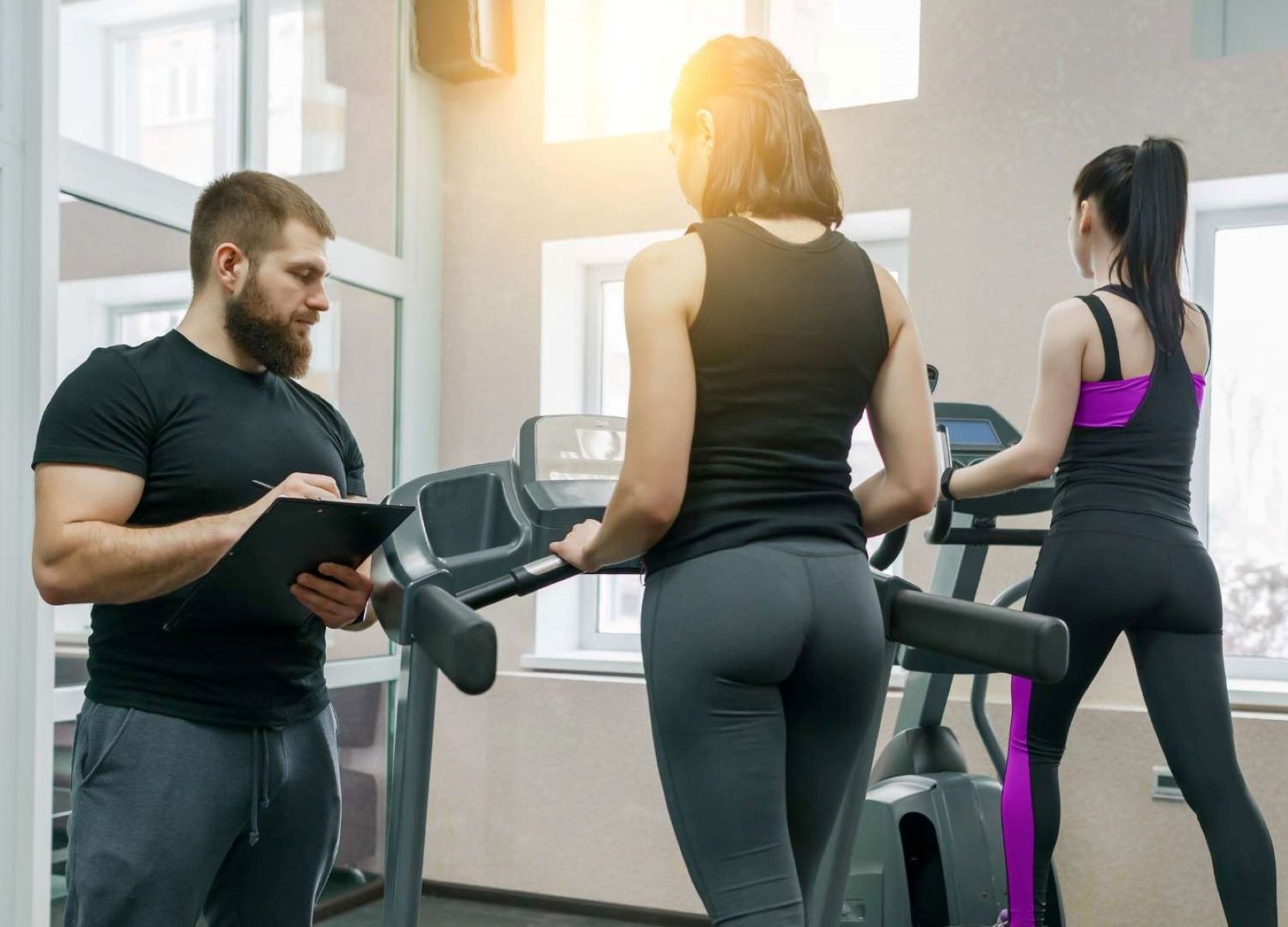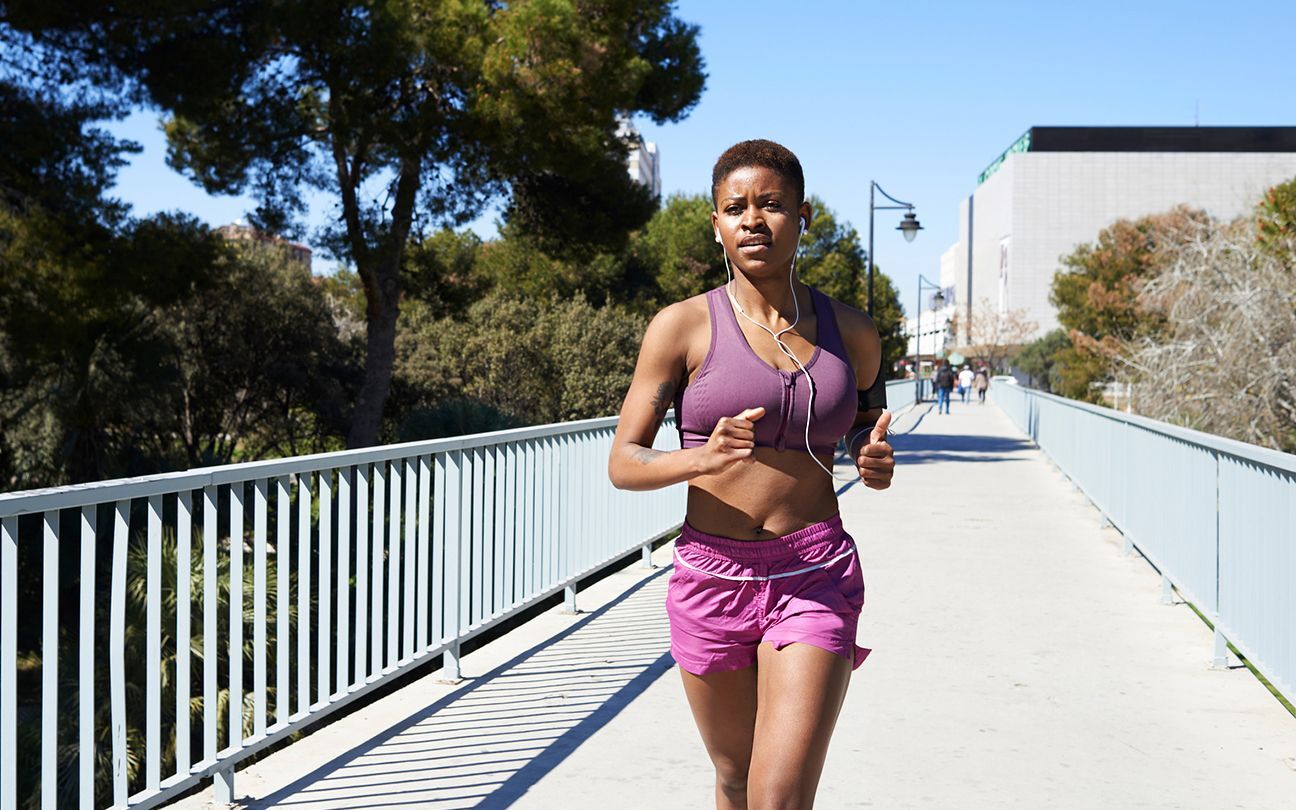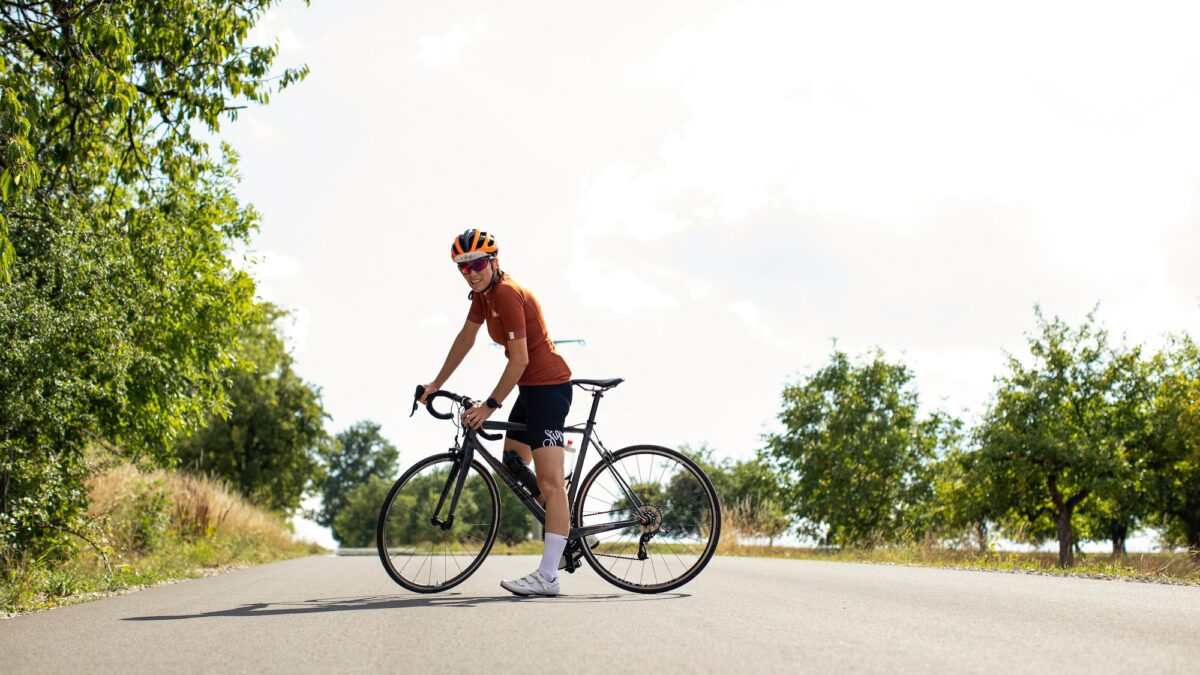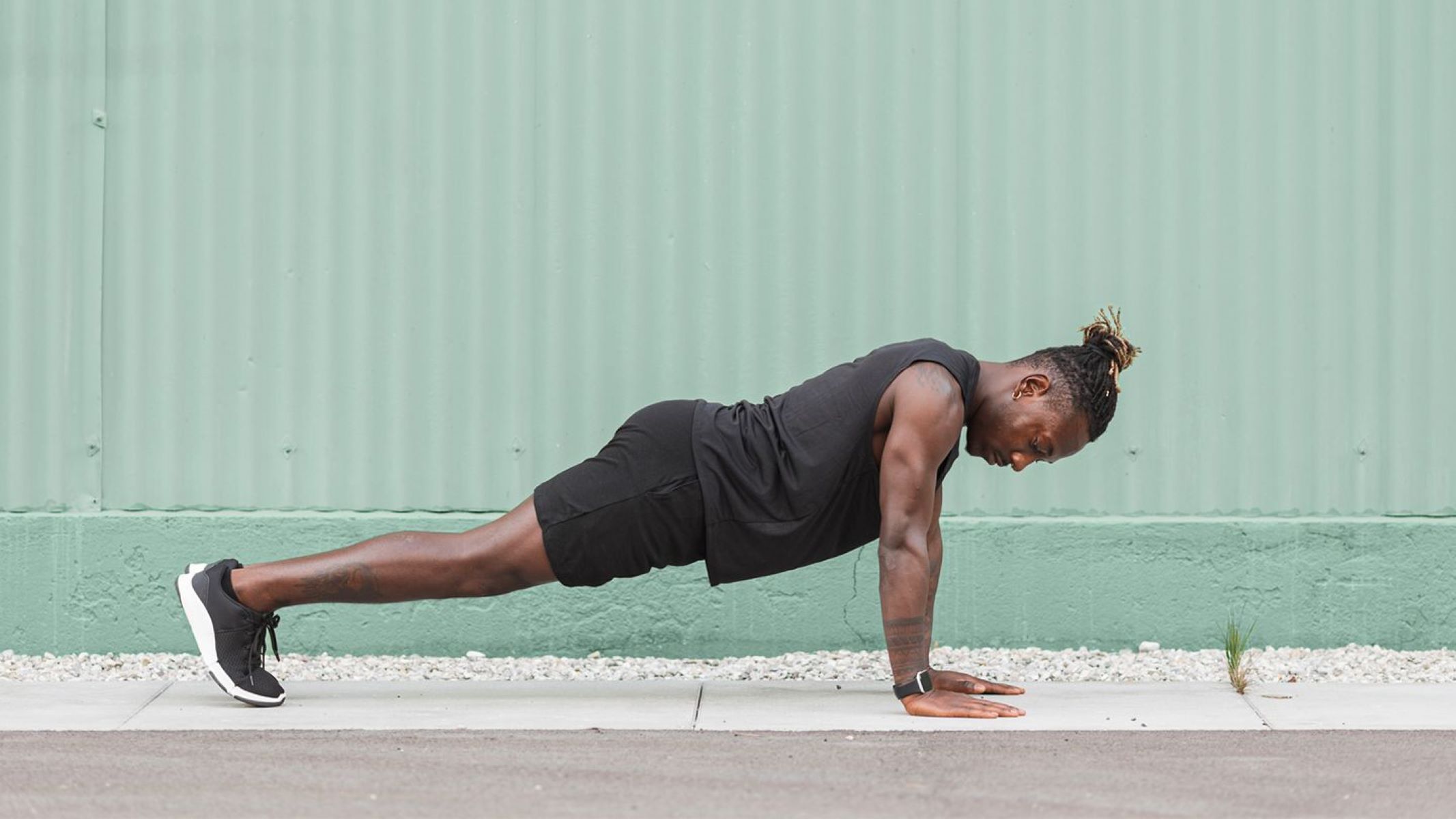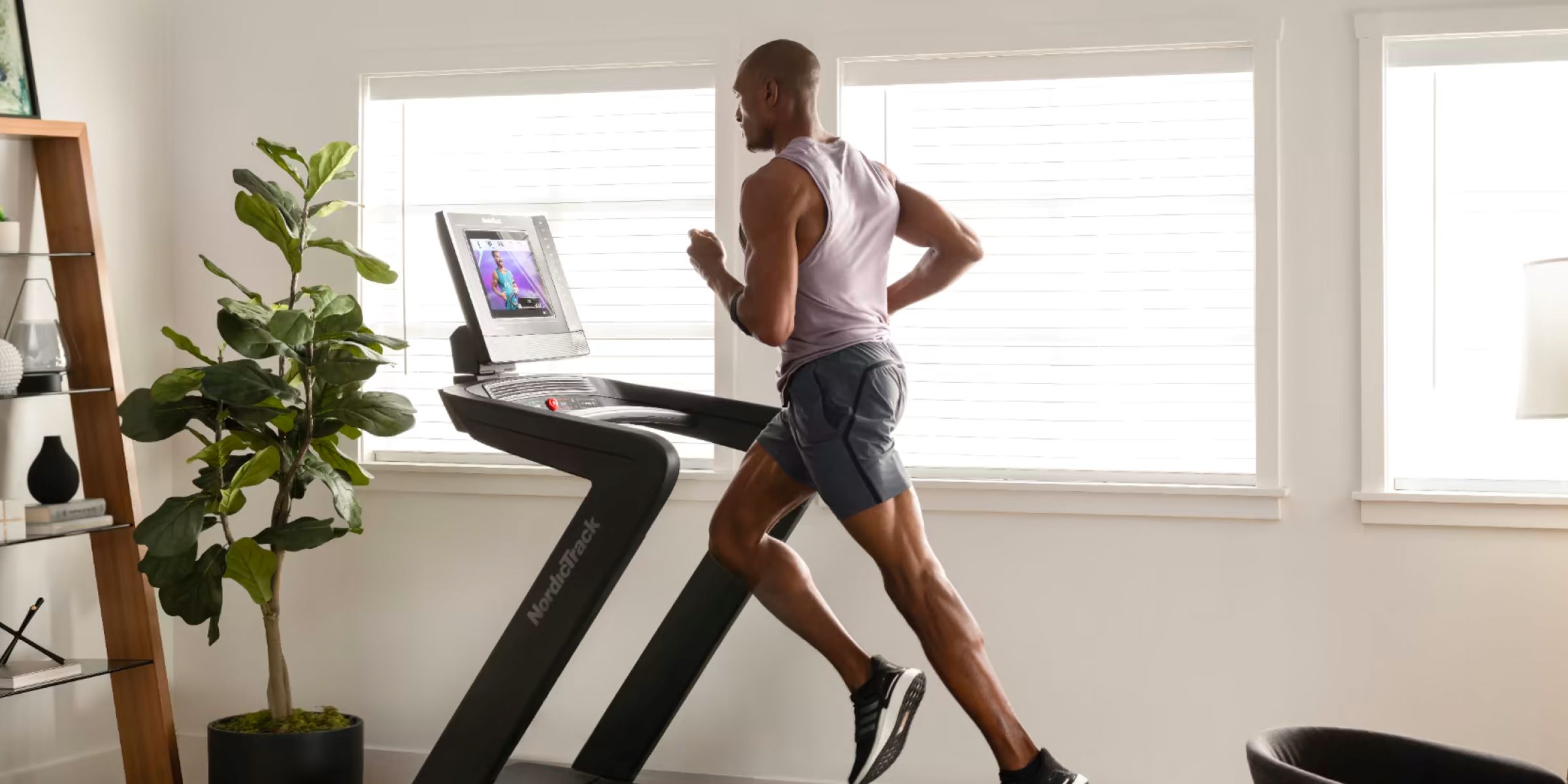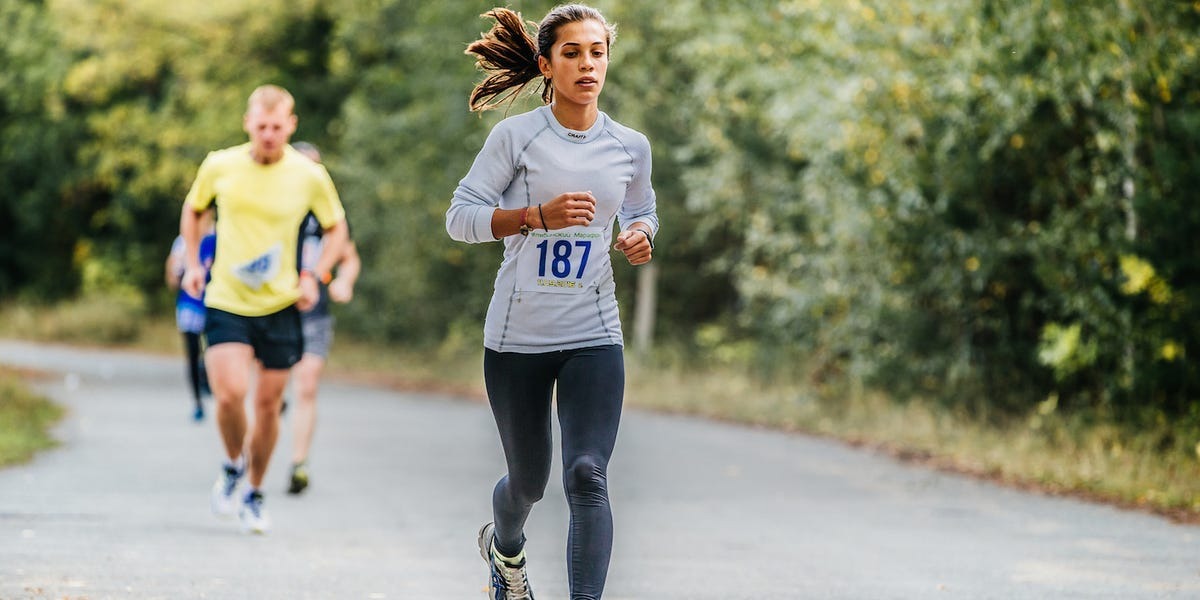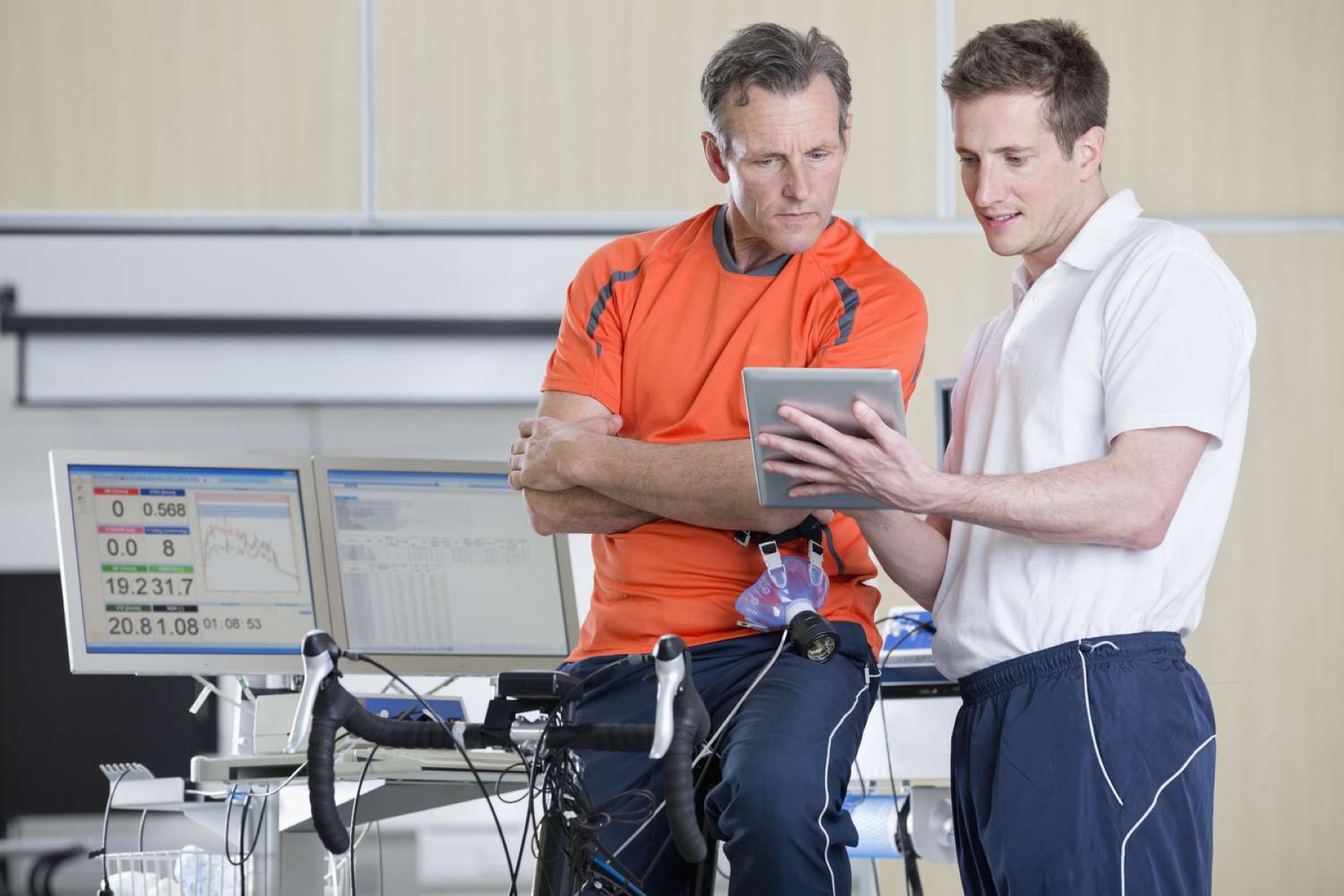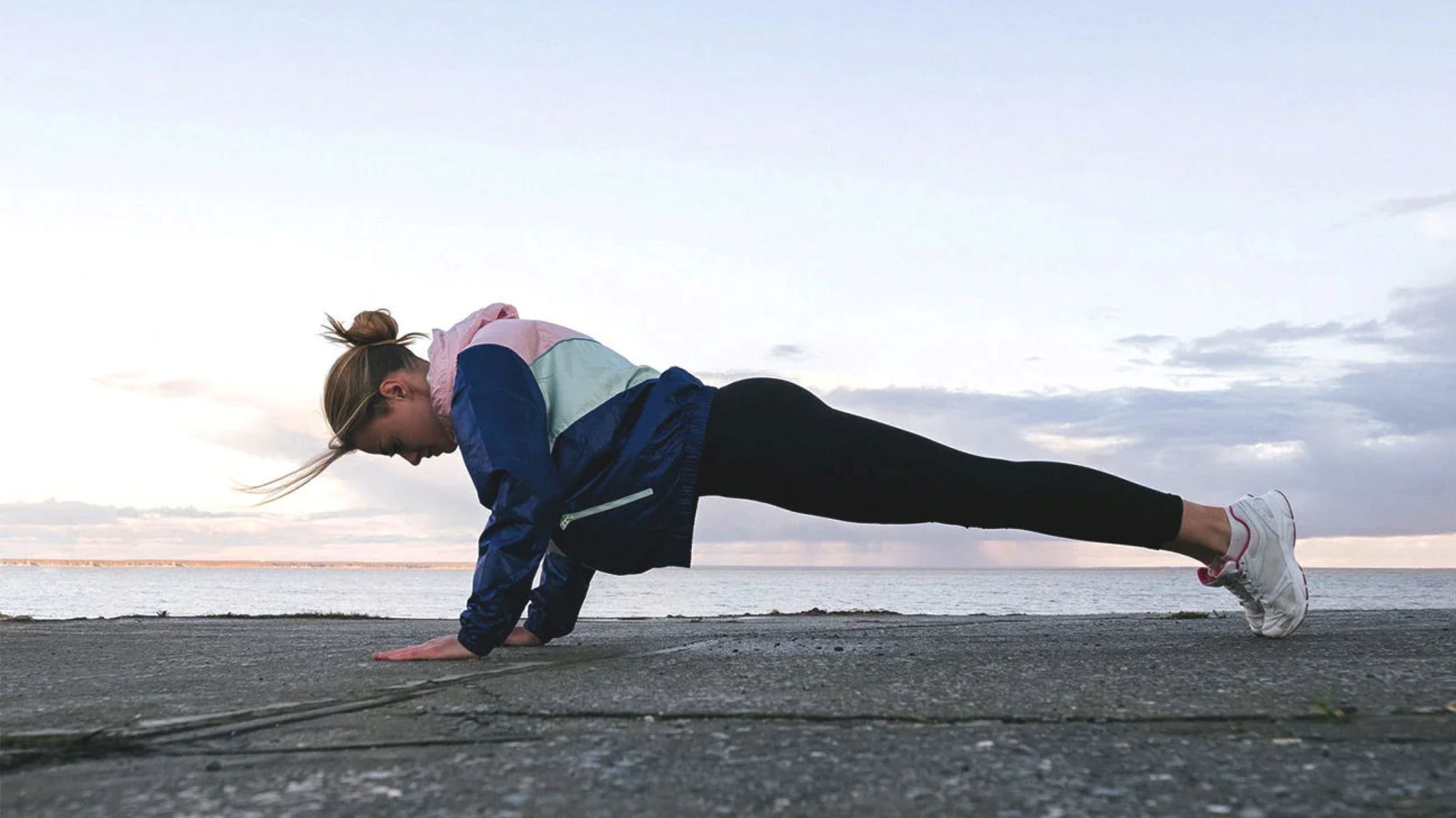Home>Misc>Featured>How Does VO2 Max Impact Athletic Performance


Featured
How Does VO2 Max Impact Athletic Performance
Modified: January 2, 2024
Discover how the featured VO2 max affects athletic performance and unlocks the true potential of athletes in their pursuit of greatness.
Introduction
Athletic performance is a complex interplay of various physiological factors, and one of the key determinants is VO2 Max. VO2 Max, also known as maximal oxygen consumption, refers to the maximum amount of oxygen an individual can utilize during intense exercise. It is widely regarded as one of the best indicators of cardiovascular fitness and endurance capacity.
VO2 Max plays a crucial role in enhancing athletic performance, regardless of the sport or activity. Whether you are a marathon runner, cyclist, soccer player, or swimmer, a higher VO2 Max can give you a competitive edge by improving your body’s ability to transport oxygen to the working muscles efficiently.
This article will delve into the intricacies of VO2 Max and its impact on athletic performance. We will explore the definition of VO2 Max, the factors affecting it, training strategies to improve it, and its effects on different sports. Additionally, we will discuss various methods used to test and measure VO2 Max.
Understanding how VO2 Max influences athletic performance can help athletes and coaches develop targeted training programs and make informed decisions to optimize performance. So, let’s dive deeper into the world of VO2 Max and uncover its importance in achieving sporting excellence.
Definition of VO2 Max
VO2 Max, or maximal oxygen consumption, is a measure of an individual’s aerobic capacity and represents the maximum amount of oxygen that can be utilized during intense exercise. It is widely considered as the gold standard for assessing cardiovascular fitness and endurance performance. VO2 Max is typically expressed as milliliters of oxygen per kilogram of body weight per minute (ml/kg/min).
During exercise, the body relies on oxygen to produce energy. The more oxygen your body can consume and use efficiently, the greater the amount of energy that can be generated. VO2 Max is a key indicator of an individual’s aerobic fitness level and their ability to perform sustained, high-intensity activity.
As an athlete’s fitness level increases, their VO2 Max tends to be higher. This means that they can take in more oxygen, deliver it to the working muscles at a faster rate, and convert it into energy more efficiently. A higher VO2 Max allows athletes to perform at higher intensities for longer durations and recover quicker between bouts of exercise.
VO2 Max is influenced by various factors, including genetics, age, sex, training status, and body composition. While genetics play a significant role in determining an individual’s baseline VO2 Max, it can be improved through targeted training and conditioning.
It’s important to note that VO2 Max is just one piece of the puzzle when it comes to athletic performance. While a high VO2 Max is advantageous, other factors such as muscular strength, power, and skill proficiency also play crucial roles in overall sporting success.
In the next sections, we will explore how VO2 Max impacts athletic performance and the factors that can influence its improvement. Additionally, we will discuss specific training strategies aimed at enhancing VO2 Max and its effects on different sports.
Importance of VO2 Max in Athletic Performance
VO2 Max plays a vital role in determining an athlete’s ability to sustain high-intensity exercise and perform at their best. Here are some key reasons why VO2 Max is crucial in athletic performance:
- Endurance Capacity: VO2 Max reflects the maximal oxygen delivery capacity of the cardiovascular system. Athletes with a higher VO2 Max can consume more oxygen, allowing them to sustain high-intensity exercise for longer durations. This is particularly important in endurance sports such as long-distance running, cycling, and swimming, where prolonged efforts are required.
- Faster Recovery: A high VO2 Max enables the body to efficiently clear lactate, a byproduct of intense exercise. This quick clearance of lactate helps athletes recover faster between intense efforts and prevents the accumulation of fatigue.
- Improved Energy Production: Maximal oxygen consumption is directly related to the body’s ability to generate energy through aerobic metabolism. Athletes with a higher VO2 Max have an enhanced capacity to produce energy aerobically, enabling them to sustain higher power outputs and speed during exercise.
- Aerobic Threshold: The point at which an athlete transitions from aerobic to anaerobic energy production is known as the aerobic threshold. Athletes with a higher VO2 Max typically have a higher aerobic threshold, allowing them to perform at higher intensities before fatiguing.
- Performance across different sports: While VO2 Max is most commonly associated with endurance sports, it also has implications for power-based sports. Even in sports like soccer, basketball, and tennis, where short bursts of intense effort are required, having a higher VO2 Max provides an advantage by aiding in quick recovery between bouts of high-intensity activity.
Improving and maximizing VO2 Max is a primary focus for many athletes looking to optimize their performance. By targeting specific training strategies and incorporating proper conditioning techniques, athletes can enhance their aerobic capacity and, subsequently, their overall athletic performance.
In the next section, we will explore the various factors that can influence an individual’s VO2 Max levels and discuss the training strategies used to improve it.
Factors Affecting VO2 Max
VO2 Max is influenced by a variety of factors, including both genetic and environmental aspects. Understanding these factors can help athletes optimize their training strategies and make informed decisions to improve their VO2 Max levels. Here are some key factors that affect VO2 Max:
- Genetics: Genetic factors play a significant role in determining an individual’s baseline VO2 Max. Some people inherently have a higher genetic potential for aerobic capacity and can attain higher VO2 Max levels compared to others.
- Age: VO2 Max typically peaks in early adulthood and gradually declines with age. This decline is partly due to physiological changes such as decreased heart function and a reduction in muscle mass.
- Sex: On average, males tend to have higher VO2 Max levels compared to females. This difference is primarily attributed to hormonal and physiological differences, including higher hemoglobin levels and greater muscle mass in males.
- Training Status: Regular aerobic exercise and training have a significant impact on VO2 Max. Athletes who engage in consistent endurance training can significantly improve their VO2 Max levels over time.
- Body Composition: Body composition, particularly lean muscle mass, plays a role in VO2 Max. A higher proportion of lean muscle mass allows for increased oxygen uptake and utilization.
- Altitude: Training or living at high altitudes can stimulate the body to adapt and increase its oxygen-carrying capacity. This adaptation may result in improved VO2 Max performance at lower elevations.
- Environmental Factors: Temperature, humidity, and air quality can impact an athlete’s VO2 Max levels. Exercise in hot and humid conditions can increase perceived exertion and adversely affect aerobic performance.
- Elevation Training: Exposure to altitude training or simulated altitude environments can stimulate physiological adaptations that enhance VO2 Max. These adaptations include increased red blood cell production and improved oxygen transportation.
It’s important to note that while genetics and certain factors are beyond an athlete’s control, many factors can be influenced through proper training, conditioning, and lifestyle choices. By understanding these influencing factors, athletes and coaches can tailor their training programs to optimize VO2 Max development.
Next, we will explore training strategies that can be implemented to improve VO2 Max levels and enhance athletic performance.
Training Strategies to Improve VO2 Max
Improving VO2 Max requires a targeted training approach that focuses on increasing the body’s ability to deliver and utilize oxygen efficiently. Here are some effective training strategies to enhance VO2 Max:
- Interval Training: High-intensity interval training (HIIT) is a powerful method to improve VO2 Max. Alternating between periods of intense exercise and active recovery challenges the cardiovascular system, resulting in adaptations that boost aerobic capacity.
- Long, Steady-State Cardio: Performing extended periods of continuous aerobic exercise at a moderate intensity can also enhance VO2 Max. This type of training helps improve the body’s oxygen utilization efficiency and promotes endurance adaptations.
- Fartlek Training: Fartlek training combines periods of high-intensity efforts with periods of recovery. This unstructured form of interval training can be particularly beneficial for improving VO2 Max as it simulates the varied intensity demands of many sports.
- Tempo Training: Tempo training involves sustained efforts at a challenging but manageable pace, typically around the athlete’s lactate threshold. This type of training improves the body’s ability to clear lactate and enhances VO2 Max performance.
- High-Intensity Intervals: Including short bursts of all-out, maximum effort exercises can further enhance VO2 Max. These intense intervals stimulate adaptations that increase the body’s oxygen-carrying capacity and utilization.
- Cross-Training: Incorporating a variety of aerobic exercises, such as cycling, swimming, and rowing, can provide a holistic training stimulus and improve overall cardiovascular fitness, ultimately enhancing VO2 Max.
- Progressive Overload: Gradually increasing the volume and intensity of training over time challenges the body to adapt and improve VO2 Max. This progressive overload approach ensures continued gains in aerobic capacity.
- Altitude Training: Training at high altitudes or using simulated altitude environments can stimulate physiological adaptations that improve VO2 Max. This method increases red blood cell production and enhances oxygen transportation.
- Recovery and Rest: Adequate recovery and rest periods are essential for optimizing adaptations and preventing overtraining. Giving the body sufficient time to recharge and repair is crucial for achieving improvements in VO2 Max.
It is important to note that training strategies should be personalized and tailored to an individual’s specific needs and fitness level. Working with a coach or exercise professional can help develop a training plan that optimizes VO2 Max development while considering other aspects of athletic performance.
Now that we have explored various training strategies to enhance VO2 Max, let’s move on to discussing the effects of VO2 Max on different types of sports performance.
Effects of VO2 Max on Endurance Sports Performance
VO2 Max plays a critical role in determining an athlete’s performance in endurance sports. Here are some key effects of VO2 Max on endurance performance:
- Improved Aerobic Capacity: Endurance sports require sustained efforts over extended periods. Athletes with higher VO2 Max levels have an enhanced capacity to utilize oxygen, allowing them to sustain high-intensity exercise for longer durations without experiencing excessive fatigue.
- Delayed Fatigue: A higher VO2 Max postpones the onset of fatigue in endurance athletes. As the body efficiently delivers oxygen to the working muscles, the accumulation of fatigue-inducing byproducts is reduced, enabling athletes to maintain a faster pace for an extended duration.
- Increased Pace or Speed: Athletes with a higher VO2 Max can run, cycle, or swim at a faster pace or speed. This advantage enables them to outperform their competitors by maintaining a higher velocity or sustaining a quicker pace throughout the race.
- Faster Recovery: With a higher VO2 Max, endurance athletes recover quicker between intense efforts. This allows them to maintain a consistent pace and perform well during multi-stage races or events that require repeated high-intensity efforts.
- Efficient Oxygen Utilization: Higher VO2 Max levels indicate an improved ability to utilize oxygen for energy production. This increased efficiency enables athletes to generate more energy aerobically, which is beneficial for reducing reliance on anaerobic energy systems during long-duration endurance activities.
- Improved Performance in Climbing: Endurance sports involving climbing, such as cycling or mountaineering, put additional demands on oxygen utilization. Athletes with higher VO2 Max levels have an advantage in climbing because they can sustain a higher power output while ascending steep inclinations.
- Enhanced Recovery: A higher VO2 Max aids in the efficient clearance of metabolic waste products, such as lactate, during recovery. This accelerates the recovery process and allows athletes to bounce back quickly for subsequent training sessions or competitions.
Endurance athletes can optimize their performance in endurance sports by focusing on training strategies and conditioning that specifically target VO2 Max improvement. By implementing appropriate training techniques and tailored programming, athletes can enhance their aerobic capacity and elevate their endurance performance to new heights.
In the next section, we will explore the effects of VO2 Max on power-based sports performance.
Effects of VO2 Max on Power-based Sports Performance
While VO2 Max is often associated with endurance sports, it also has significant implications for power-based sports that involve explosive efforts and short-duration activities. Here are some effects of VO2 Max on power-based sports performance:
- Enhanced Recovery: A higher VO2 Max allows for efficient clearance of lactate, a byproduct of intense exercise. This quick recovery between bouts of high-intensity efforts is crucial in power-based sports such as weightlifting, sprinting, and jumping, where repeated explosive efforts are required.
- Improved Stamina: Even in power-based sports, having a higher VO2 Max can contribute to improved stamina. Athletes can perform more repetitions or maintain a higher power output for longer durations, thereby gaining an advantage over their competitors during prolonged events or high-intensity training sessions.
- Optimal Oxygen Delivery: Power-based sports require a rapid and efficient delivery of oxygen to the working muscles during explosive movements. Athletes with higher VO2 Max levels have an enhanced ability to deliver oxygen, allowing for increased energy production and more powerful performance in activities such as throwing, sprinting, and jumping.
- Increased Energy Production: VO2 Max influences an athlete’s ability to utilize oxygen for aerobic energy production. Athletes with higher VO2 Max can generate more energy aerobically, reducing reliance on anaerobic systems and sustaining higher power outputs during explosive movements.
- Improved Overall Fitness: A higher VO2 Max signifies superior cardiovascular fitness and overall conditioning. Athletes with better cardiovascular fitness are better equipped to tolerate intense effort and recover quickly, leading to improved performance in power-based sports.
- Better Fatigue Resistance: Athletes with higher VO2 Max levels experience delayed fatigue during prolonged power-based activities. This improved fatigue resistance allows athletes to maintain high power output levels for longer durations, giving them an advantage in competitions and training sessions.
- Efficient Energy System Utilization: Higher VO2 Max levels indicate better utilization of aerobic energy systems. This efficiency allows for optimal energy allocation and delay in the activation of less efficient anaerobic systems, contributing to improved performance in power-based sports.
While power-based sports may not primarily rely on endurance capacities, a higher VO2 Max still plays a critical role in providing athletes with the ability to sustain high-intensity efforts, recover quickly between bursts of activity, and exhibit superior overall fitness.
Understanding the effects of VO2 Max on power-based sports can guide athletes and coaches in designing training programs that specifically target VO2 Max improvement, leading to enhanced power generation, performance, and success in their respective disciplines.
In the next section, we will discuss the methods used to test and measure an individual’s VO2 Max.
VO2 Max Testing Methods
Measuring an individual’s VO2 Max is crucial in assessing their aerobic fitness level and helping them understand their performance potential. Several testing methods are commonly used to determine VO2 Max. Here are some of the most common methods:
- Treadmill Testing: Treadmill testing involves running on a treadmill while gradually increasing the speed and/or incline until exhaustion. During the test, the athlete wears a mask or mouthpiece connected to a gas analyzer apparatus that measures the volume of oxygen intake and carbon dioxide output. This method provides accurate and reliable results.
- Stationary Bike Testing: Stationary bike testing is similar to treadmill testing, but with the use of a stationary bike as the exercise modality. Like treadmill testing, it measures oxygen uptake and carbon dioxide production to determine VO2 Max. This method is often used for individuals who prefer cycling or for those with limitations preventing treadmill use.
- Field Tests: Field tests are practical and versatile methods for estimating VO2 Max. These tests often involve running or cycling specific distances or durations at maximal effort. Examples include the Cooper Test, the 1.5-mile run test, the Yo-Yo Intermittent Recovery Test, and the Bleep Test. While field tests may not provide absolute VO2 Max values, they offer a quick and practical way to monitor changes in aerobic fitness over time.
- Metabolic Cart Testing: Metabolic cart testing involves the use of specialized equipment that measures oxygen consumption and carbon dioxide production during exercise. Athletes wear a mask connected to the metabolic cart, which provides precise data on respiratory rates and gas exchange. This method is highly accurate but is often conducted in laboratory settings with trained professionals.
- Smartphone Apps and Wearables: With advancements in technology, smartphone apps and wearable devices are becoming popular tools for estimating VO2 Max. These apps and devices use heart rate data, age, gender, and other variables to estimate an individual’s VO2 Max. While not as accurate as laboratory testing, they provide a convenient way to monitor and track changes in aerobic fitness.
It is important to note that VO2 Max tests should be conducted by qualified professionals, especially when using laboratory-based methods. Variables such as testing protocols, equipment calibration, and data interpretation require expertise to ensure accurate results.
VO2 Max testing can provide valuable insights into an individual’s aerobic fitness, guide training program design, and monitor changes in performance over time. By utilizing these testing methods, athletes and coaches can gain a better understanding of an athlete’s capacity and tailor training strategies accordingly.
Now that we have explored the various methods to test and measure VO2 Max, let’s wrap up the article by summarizing the key points discussed.
Conclusion
VO2 Max, or maximal oxygen consumption, is a critical factor in determining an athlete’s aerobic capacity and performance potential. It reflects an individual’s ability to utilize oxygen efficiently during exercise, making it a valuable metric for assessing cardiovascular fitness and endurance performance.
In this article, we explored the definition of VO2 Max and its importance in athletic performance. We discussed how VO2 Max impacts both endurance sports and power-based sports, highlighting the effects it has on stamina, recovery, oxygen delivery, and energy production.
We also examined the various factors that influence VO2 Max, including genetics, age, training status, and environmental conditions. Understanding these factors can help athletes and coaches optimize their training and conditioning regimens to improve VO2 Max levels.
Additionally, we explored training strategies aimed at enhancing VO2 Max, such as interval training, steady-state cardio, and cross-training. These strategies can help athletes maximize their aerobic capacity and boost their potential in sporting endeavors.
We discussed the different methods used to test and measure VO2 Max, including treadmill and stationary bike testing, field tests, metabolic cart testing, and smartphone apps and wearables. These testing methods provide valuable insights into an athlete’s aerobic fitness and guide training program design.
Improving and maximizing VO2 Max is a continual journey that requires dedication, proper training, and attention to individual needs. By focusing on enhancing aerobic capacity and optimizing oxygen utilization, athletes can reach new levels of performance and achieve their sporting goals.
Whether you’re a long-distance runner aiming to improve your marathon time or a sprinter looking to enhance your speed and power, understanding and improving your VO2 Max will undoubtedly contribute to your success as an athlete.
So, harness the power of VO2 Max, train smart, and push the boundaries of your athletic performance!
